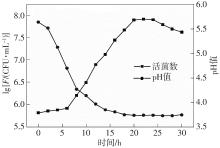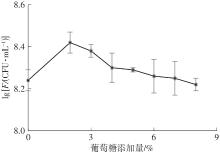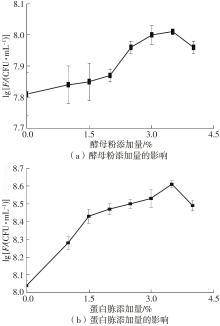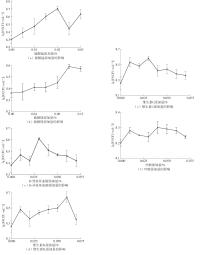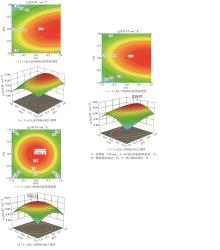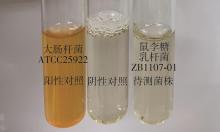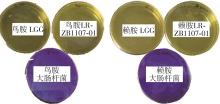| 1 |
王子建 .鼠李糖乳杆菌制剂治疗牛奶蛋白过敏患儿对其胃肠道功能和免疫功能的影响[J].医学理论与实践,2021,34(23):4134-4135.
|
|
WANG Zijian .Effects of Lactobacillus rhamnosus preparations on gastrointestinal and immune functions in children with milk protein allergy[J].Medical Theory and Practice,2021,34(23):4134-4135.
|
| 2 |
BERNI C R, SANGWAN N, STEFKA A T,et al . Lactobacillus rhamnosus GG-supplemented formula expands butyrate-producing bacterial strains in food allergic infants[J].The ISME Journal,2016,10(3):742-750.
|
| 3 |
FONG W, LI Q, YU J .Gut microbiota modulation:a novel strategy for prevention and treatment of colorectal cancer[J].Oncogene,2020,39(26):4925-4943.
|
| 4 |
MONTEAGUDO-MERA A, RASTALL R A, GIBSON G R,et al .Adhesion mechanisms mediated by probiotics and prebiotics and their potential impact on human health[J].Applied Microbiology and Biotechnology,2019,103(16):6463-6472.
|
| 5 |
FORESTIER C, DE CHAMPS C, VATOUX C,et al .Probiotic activities of Lactobacillus casei rhamnosus:in vitro adherence to intestinal cells and antimicrobial pro-perties[J].Research in Microbiology,2001,152(2):167-173.
|
| 6 |
TOMARO-DUCHESNEAU C, JONES M L, SHAH D,et al .Cholesterol assimilation by Lactobacillus probiotic bacteria:an in vitro investigation[J].BioMed Research International,2014,1(1):380316/1-9.
|
| 7 |
H-S YOON, JU J-H, KIM H,et al . Lactobacillus rhamnosus BFE 5264 and Lactobacillus plantarum NR74 promote cholesterol excretion through the up-regulation of ABCG5/8 in Caco-2 cells[J].Probiotics and Antimicrobial Proteins,2011,3(3/4):194-203.
|
| 8 |
SANCHEZ M, DARIMONT C, DRAPEAU V,et al .Effect of Lactobacillus rhamnosus CGMCC1. 3724 supplementation on weight loss and maintenance in obese men and women[J].British Journal of Nutrition,2014,111(8):1507-1519.
|
| 9 |
SHU Q, GILL H S .Immune protection mediated by the probiotic Lactobacillus rhamnosus HN001 (DR20™) against Escherichia coli O157:H7 infection in mice[J].FEMS Immunology & Medical Microbiology,2002,34(1):59-64.
|
| 10 |
KARA S S, VOLKAN B, ERTEN I . Lactobacillus rhamnosus GG can protect malnourished children[J].Beneficial Microbes,2019,10(3):237-244.
|
| 11 |
SLYKERMAN R F, HOOD F, WICKENS K,et al .Effect of Lactobacillus rhamnosus HN001 in pregnancy on postpartum pymptoms of depression and anxiety:a randomised double-blind placebo-controlled trial[J].EBioMedicine,2017,24:159-165.
|
| 12 |
SCHIRALDI C, ADDUCI V, VALLI V,et al .High cell density cultivation of probiotics and lactic acid production[J].Biotechnology and Bioengineering,2003,82(2):213-222.
|
| 13 |
TERPOU A, PAPADAKI A, LAPPA I,et al .Probio-tics in food systems:significance and emerging strategies towards improved viability and delivery of enhanced beneficial value[J].Nutrients,2019,11(7):1591-1600.
|
| 14 |
DONG Z, GU L, ZHANG J,et al .Optimisation for high cell density cultivation of Lactobacillus salivarius BBE 09-18 with response surface methodology[J].International Dairy Journal,2014,34(2):230-236.
|
| 15 |
谢为天,徐春厚,冯晓杰 .鼠李糖乳杆菌LT22发酵培养基优化[J].安徽农业科学,2012,40(12):7155-7156,7239.
|
|
XIE Wei-tian, XU Chun-hou, FENG Xiao-jie .Optimization of fermentation medium for Lactobacillus rhamnosus LT22[J].Anhui Agricultural Science,2012,40(12):7155-7156,7239.
|
| 16 |
顾旭峰,艾连中,宋馨,等 .两株干酪乳杆菌的安全性评价[J].食品与发酵科技,2015,51(2):63-65.
|
|
GU Xu-feng, AI Lian-zhong, SONG Xin,et al .Safety evaluation of two strains of Lactobacillus casei [J].Food and Fermentation Science and Technology,2015,51(2):63-65.
|
| 17 |
MARCOBAL A, DE LAS RIVAS B, LANDETE J M,et al .Tyramine and phenylethylamine biosynthesis by food bacteria[J].Crit Rev Food Sci Nutr,2012,52(5):448-467.
|
